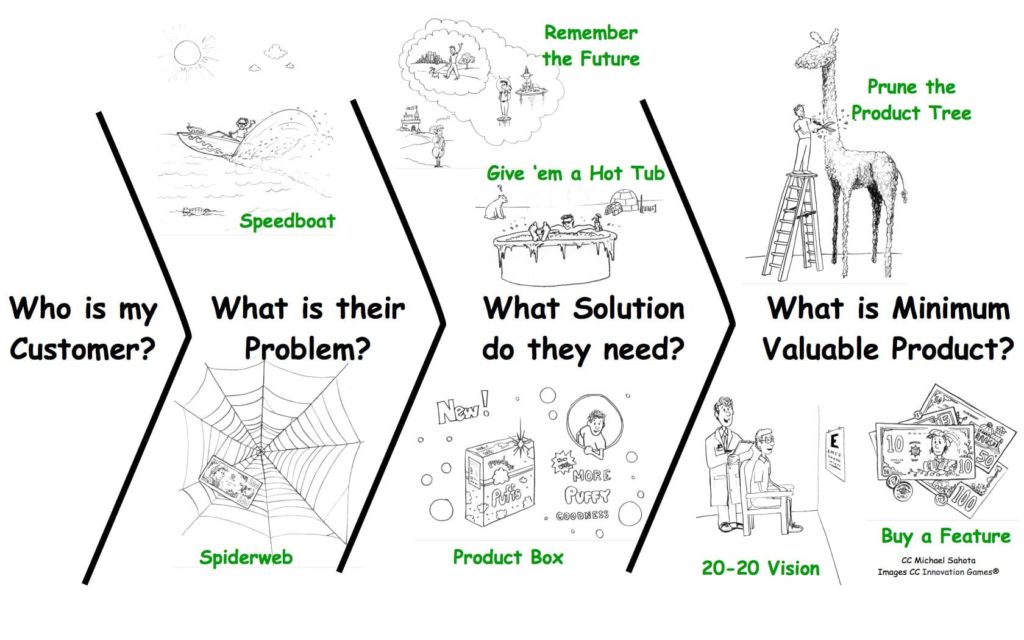At Lean Startup Machine this past weekend, I was struck by the realization that a well-known facilitation approach in the Product Management and Agile communities, Innovation Games®, can be used to boost insights and learning about customers, their problems, and their needs. Here a quick visual before I motivate the problem: 
Customer Discovery and Validation
Steve Blank’s Customer Development Manifesto includes a key principle: Iterations and Pivots are Driven by Insight. Lean Startup is about applying scientific principles to study, measure, and assess the validity of hypothesis about customers, problems and products. One challenge I noticed at lean startup weekend, is that insights have to come from somewhere! So I think of two pillars for success: 1. generating great hypothesis and 2. learning fast.
But how to Generate Insights?
Lean Startup does not provide tools for generating insights. One key way of gathering ideas is to get out of the building and talk to our customers. This is a great starting point as customers will tell us all sorts of things. Unfortunately, the interview process is flawed as interviewers are subject to bias: we filter the world from our perspective and worse we tune our questions based on what we are looking for. So interviews help, but may not be sufficient.
Innovation Games® in Lean Startup Context
Innovation Games® are a fast, fun approach to gather data that can help drive key insights to generate hypothesis. It gets around the problem of bias by having customers interact with each other directly either in person or online. Interactions between participants lead to a much richer understanding and deeper insights. The diagram above shows the connection between key questions asked in Lean Startup and how Innovation Games® can help at each stage. Here’s a short introduction to some of the games:
- What is their Problem? Speedboat – Customers identify their biggest pain points around the topic you are exploring. They will tell you if your problem is important or not.
- What Solution do they need? Product Box – Customers work individually or in small teams to create and sell their ideal product. Let them tell you how to solve their problem.
- What is the Minimum Viable Product? 20-20 Vision – Customers negotiate the relative importance of such things as product features, market requirements, and product benefits.
Check out more descriptions of in-person and online games. So what does the entrepreneur or product manager do while people are talking to each other? Listen. Listen. Listen. Customers will not only tell you what is important, but why they are important. Good facilitation will help peel back the layers of assumptions to get to what people’s drivers are. If you are in Toronto and want help learning or facilitating these games, please let me know.


